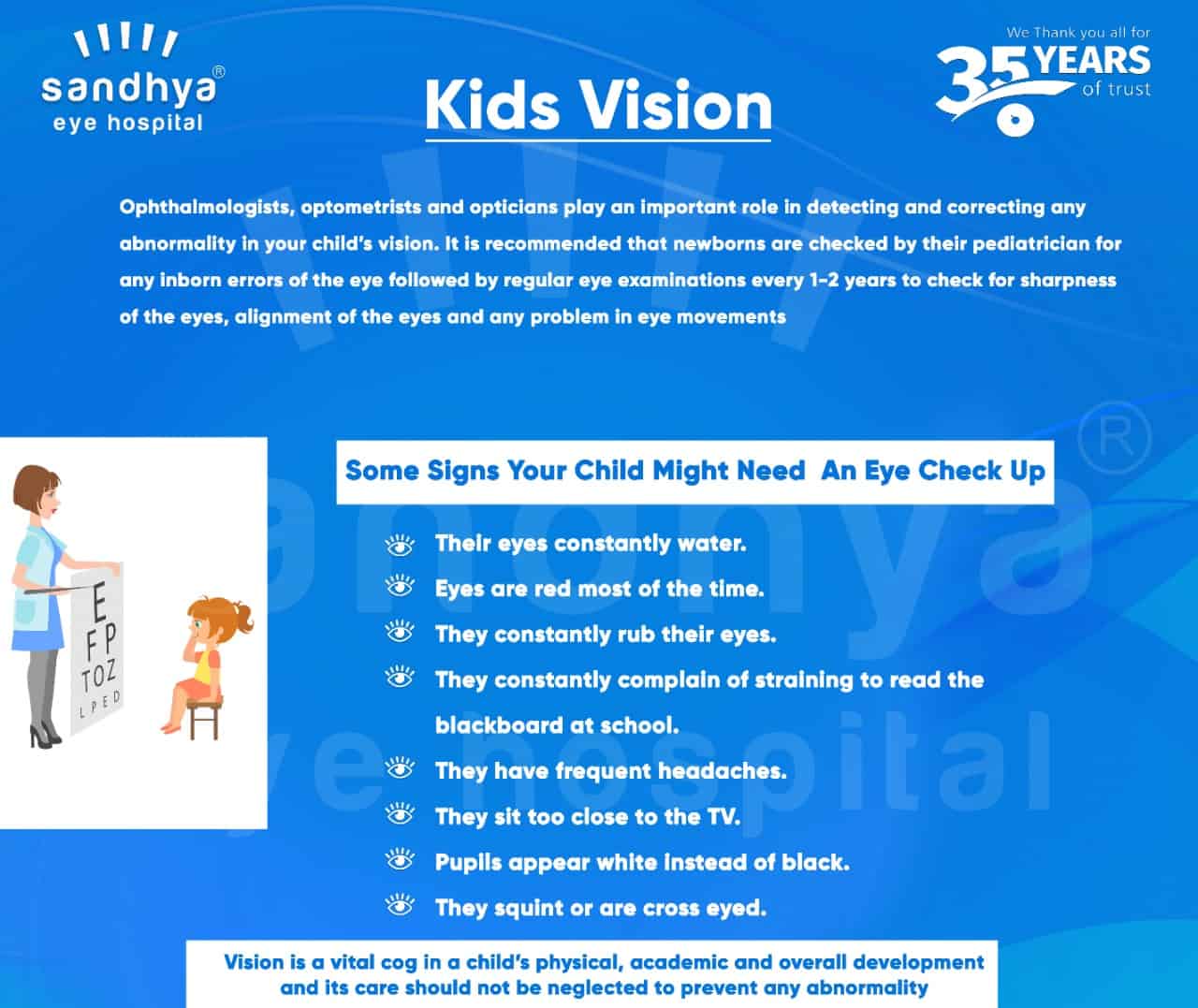Did you know that the rate of kids being diagnosed with near sightedness (myopia) is increasing faster than ever before? That more children are getting near sighted earlier in life? Since 80 percent of a child’s learning in school depends on their vision it is really important to take your child for regular eye check-ups to rule out any such difficulties your child might be facing unknowingly. Children who have myopia since a very young age tend to develop dreaded complications like glaucoma, retinal detachment and cataract later in life. Therefore early detection of such refractive errors and timely correction is important.
Ophthalmologists, optometrists and opticians play an important role in detecting and correcting any abnormality in your child’s vision. It is recommended that newborns are checked by their pediatrician for any inborn errors of the eye followed by regular eye examinations every 1-2 years to check for sharpness of the eyes, alignment of the eyes and any problem in eye movements.

Some signs your child might need an eye check up:
- Their eyes constantly water.
- Eyes are red most of the time.
- They constantly rub their eyes.
- They constantly complain of straining to read the blackboard at school.
- They have frequent headaches.
- They sit too close to the TV.
- Pupils appear white instead of black.
- They squint or are cross eyed.
Such symptoms need to be immediately informed to your ophthalmologist and tested so he or she can detect any hidden pathologies and take necessary action to prevent its progression. Early detection is important as your child’s visual part of the brain develops in this young age and any disease causing abnormal signals to reach their brain can make it adapt to such signals. This adaptation is permanent and cannot be corrected once brain development has taken place.
Common eye problems in children include:
- Refractive errors, which can be of three types — nearsightedness (myopia), farsightedness (hypermetropia), or irregular curvature of the eye (astigmatism). These abnormalities are corrected with spectacles or contact lenses.
- Squint (strabismus) which is misalignment of the eyes. This can lead to double vision and is corrected with eye patches or surgeries to strengthen or weaken the eye muscles.
- Ambylopia or lazy eye, which occurs due to the above two conditions and can lead to permanent visual impairment if not corrected before brain programming becomes permanent.
- Cataracts or clouding of lens, which can cause blurring of vision. Early detection and corrective surgery to replace the lens with an artificial lens is vital.
- Eye injuries, which are one of the most common cause of permanent blindness in children. Children need to be protected when playing impact sports such as hockey, football or cricket. Regular spectacles do not offer good protection and can even shatter and cause additional damage. Protective goggles are required to prevent such injuries.
- Glaucoma, a disease with increased pressure in the eye which can cause disfigurement and permanent visual loss. Treatment includes eye drops and surgery to drain the accumulating fluid in the eyes.
- Eye cancers are common in childhood and need to be detected and treated early to prevent vision loss and spreading of such cancers throughout the body.
Vision is a vital cog in a child’s physical, academic and overall development and its care should not be neglected to prevent any abnormality.

